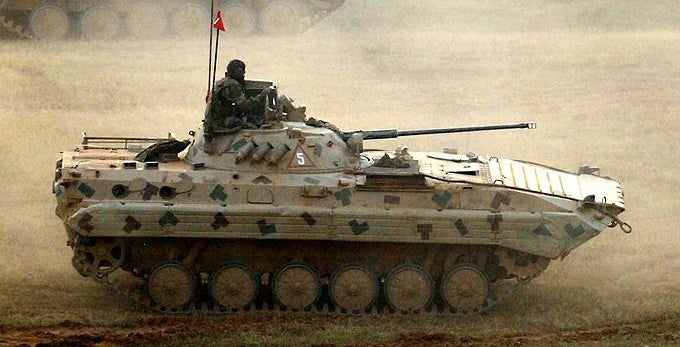Indian Army to Upgrade Over 800 BMP-2 Sarath Infantry Fighting Vehicles
The Indian Army has announced that it will receive Expressions of Interest (EoI) from domestic companies on upgrading 811 of its BMP-2/2K “Sarath” infantry combat vehicles. Producers have been asked to submit proposals by 16 October.
The Indian’s are thought to operate over 2,600 BMP-2/2Ks, first purchasing batches from the Soviet Union and fielding the vehicle in 1985. Licence production subsequently took place within India and the vehicle is now the primary infantry combat vehicle of the army’s mechanised forces.
However, the Indian Army admitted in its announcement that the BMP-2/2K has become outdated in certain key areas, notably in its night-fighting and target tracking capabilities. The Army’s invitation for EoIs states that: “The armament system is Night Blind as on date and needs to be upgraded with modern sights thereby fulfilling the critical operational void.”
The Army’s statement also suggests that the recent tensions with China and Pakistan are the cause for the sudden upgrade and the speed of the program:
“The terrain along our borders lends itself to conduct of large scale mechanised operations and the belligerence of our adversaries on the borders, necessitate that our capabilities are adequately built up to match the threat.”
The upgrade is required to add 3rd generation thermal imager sights for both the vehicle commander and gunner as well as a modernised fire control system and auto-target tracking capability. The current vehicles operate older image intensifier sights.
A key stipulation in the invitation is that 40% of the new equipment be built in India and that “critical technology” as committed by the vendor in their proposal will mandatorily be including as part of home-built content. This policy is in line with recent efforts by the Indian government to develop indigenous production of military hardware.
Selected contractors will be loaned an Indian Army BMP-2 to perform modifications on and create a demonstration test bed. The prototypes should be ready for testing within the next year to meet the selection specifications.

